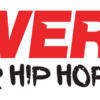Hip-hop roots can be traced to the creativity and expression of African American and Latino communities in this urban setting. The emergence of MCs (masters of ceremony) who rhymed and rapped over beats became a crucial aspect.
The genre evolved as a form of artistic and cultural expression, encompassing not only music but also elements like graffiti art and breakdancing. Over the years, hip-hop has grown into a global cultural phenomenon, influencing various artistic fields and becoming a powerful medium for social commentary.
In this article we’ll address key questions fans ask about hip-hop’s origins, shedding light on the first rappers, the inaugural black rapper, and the trailblazing figures who set the stage for this influential art form.
Related: The 10 Best Hip-Hop One-Hit Wonders of All Time | Celebrating 50 Years of Rap Culture
Hip-hop is a cultural movement that originated in the 1970s in New York City, and consists of four main elements: deejaying, rapping, graffiti, and break dancing. Hip-hop is also the name of the music genre that features rhythmic and/or rhyming speech, often accompanied by electronic beats and scratching. Hip-hop music is also known as rap music, and hip-hop artists are also called rappers or MCs.
Hip hop was founded by DJ Kool Herc, a Jamaican immigrant who threw the historic Back to School Jam in his Bronx apartment building in 1973. DJ Kool Herc, often credited as one of the pioneers, played a significant role by using two turntables to extend the instrumental breaks in songs, creating the foundation for what would later be known as breakbeats.This innovative DJ technique laid the groundwork for the rhythmic and dance elements of hip-hop.




Hip-hop is not short for anything, but rather a term that was coined by DJ Lovebug Starski in the late 1970s to describe the culture and music of the urban youth in New York Ci. The word hip-hop is a combination of two slang terms: hip, meaning in the know or fashionable, and hop, referring to the jumping movement of dancers.




Hip-hop is a cultural movement that originated in the late 1970s in the economically depressed South Bronx section of New York City. Although often used interchangeably with rap music, hip-hop is a complex culture that comprises four elements: deejaying, rapping, graffiti painting, and B-boying. Deejaying, also known as turntabling, involves manipulating sounds and creating music using turntables.
Rapping, also known as MCing or rhyming, is the rhythmic and rhyming speech that forms the basis of rap music. Graffiti painting, also known as graf or writing, is the art of writing or drawing on walls or other surfaces. B-boying, which encompasses hip-hop dance, style, and attitude, is a form of street dance that originated in African American and Latino communities in New York City.
Hip-hop’s origins are shrouded in myth, enigma, and obfuscation. The movement began at society’s margins and has since become a global phenomenon. Hip-hop has been used as a platform for social and political commentary, and has been influential in shaping popular culture.
The culture has evolved over time, and new elements have been added to the original four. Knowledge of self/consciousness is sometimes added to the list of hip-hop self-consciousnessy by socially conscious hip-hop artists and scholars. Hip-hop has had a lasting impact on music, fashion, and art, and continues to be a powerful force in contemporary culture .
There are different accounts of who named hip-hop. One of the most popular ones is that DJ Lovebug Starski coined the term in the late 1970s to describe the culture and music of the urban youth in New York City.
Another one is that Keith (Keef Cowboy) Wiggins, a member of the rap group Grandmaster Flash and the Furious Five, used the words hip/hop/hip/hop, imitating the sound of soldiers marching, in reference to a friend who had joined the army.
A third one is that Afrika Bambaataa, the leader of the Zulu Nation and a pioneer of hip-hop, popularized the term in the early 1980s and defined the four elements of the movement: DJing, rapping, breaking, and graffiti writing .
There is no definitive answer to who was the first black rapper, as rap music has multiple origins and influences from different cultures and traditions. However, some of the earliest and most influential black rappers in the history of hip-hop are:
Kurtis Blow, who became the first rapper to sign a major label record deal (Mercury) and the first rapper to appear on national television (Soul Train) in the late 1970s.




The Sugarhill Gang, whose song Rapper’s Delight (1979) is widely considered the first rap song to get radio play and the first hip-hop single to become a Top 40 hit on Billboard.
Grandmaster Flash and the Furious Five, who introduced the innovative techniques of scratching, cutting, and mixing records, and whose song The Message (1982) is regarded as one of the most influential and socially conscious rap songs of all time.
Afrika Bambaataa, who popularized the term hip-hop and defined the four elements of the culture: DJing, rapping, breaking, and graffiti writing. He also founded the Universal Zulu Nation, a hip-hop awareness group that promoted peace and unity among the youth.
The future of hip-hop is hard to predict, as the genre has always been evolving and adapting to new trends and influences. However, based on the web search results, some possible directions for the future of hip-hop are:
Hip-hop will continue to fuse with other genres, such as rock, pop, R&B, and even classical music, creating new sounds and styles. Hip-hop will become more global and diverse, as artists from different countries and cultures will bring their own perspectives and experiences to the genre.
Hip-hop will leverage new technologies and platforms, such as artificial intelligence, virtual reality, and social media, to create innovative and interactive music and experiences. Hip-hop will remain a powerful voice for social change and justice, as artists will use their music to address the issues and challenges facing their communities and the world.




Hip-hop has come a long way since its early days in the Bronx. Today, it is a global phenomenon that has influenced music, fashion, and art around the world. Hip-hop has given a voice to marginalized communities and has become a platform for social commentary and political activism. It has also become a multi-billion dollar industry, with artists like Jay-Z, Kanye West, and Drake dominating the charts.
The genre is a cultural movement that has had a profound impact on American culture and the world. Its pioneers, including DJ Kool Herc, Kurtis Blow, and Coke La Rock, laid the foundation for a genre of music that has become a global phenomenon.
Read More: Unforgettable Rap Beefs That Have Ended In Hip-Hop History
This post was originally published on this site be sure to check out more of their content.








